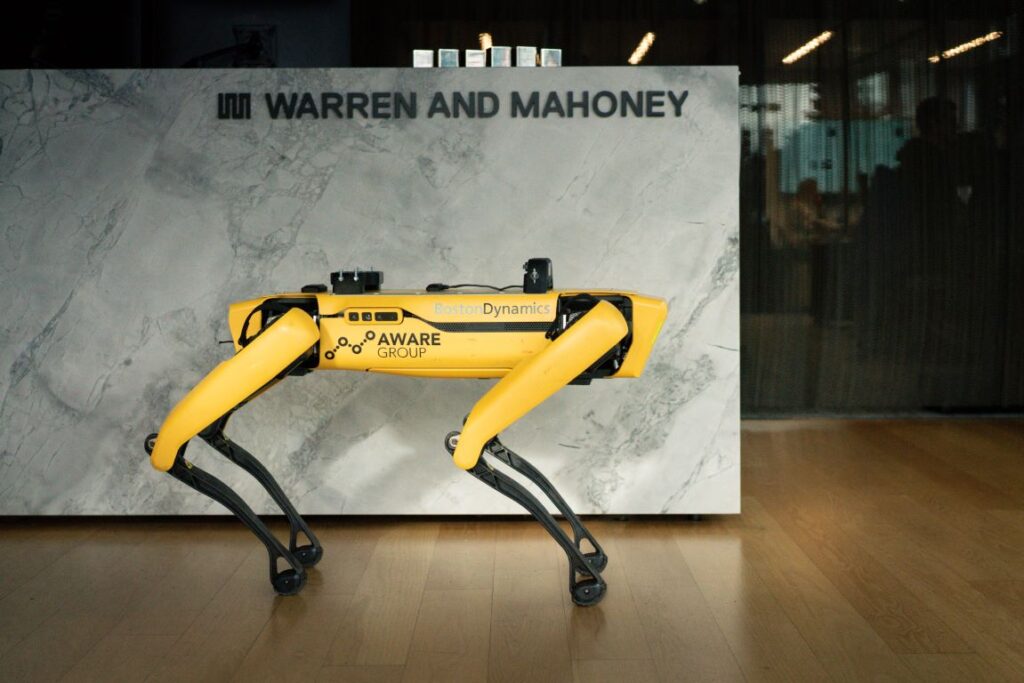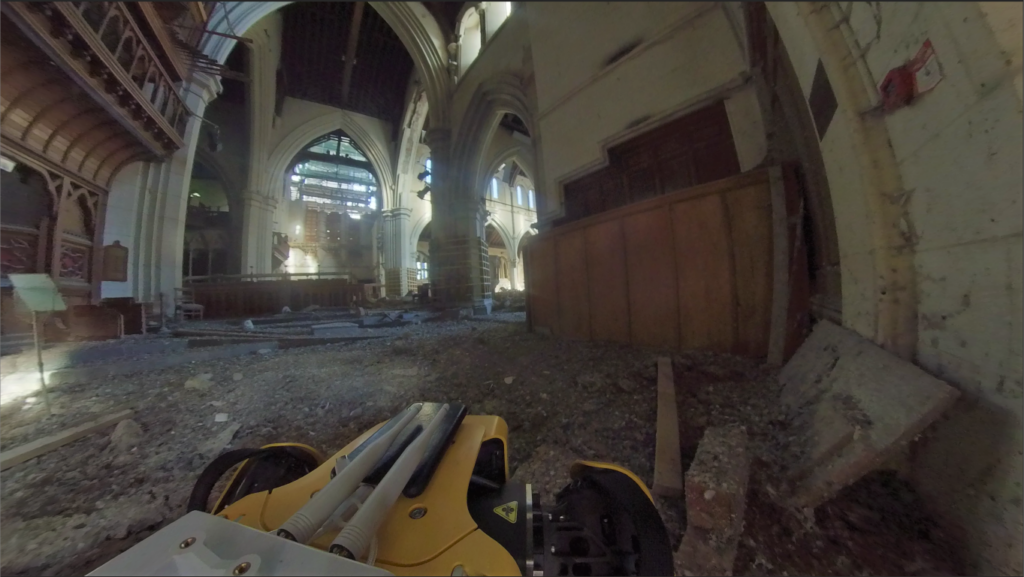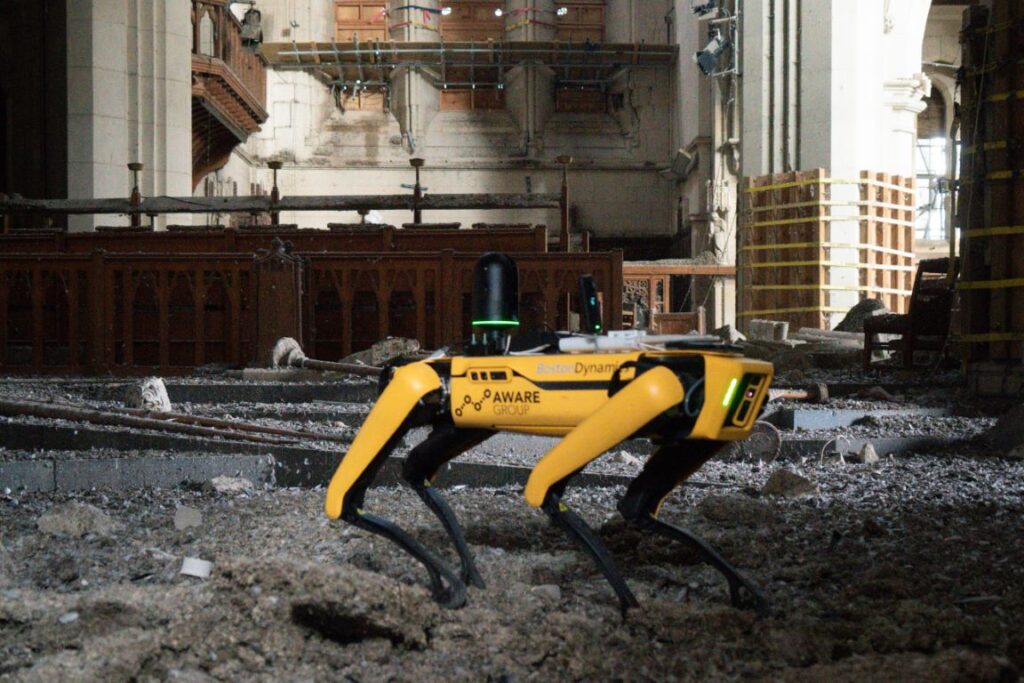In 2011, the city of Christchurch was hit with several high-magnitude earthquakes, tragically costing more than 180 lives and causing billions of dollars in damage to the city. One of the most severely damaged buildings in the earthquake, and one of those most noticeable as you walk through the downtown area, is Christ Church Cathedral. This iconic heritage building, located in the heart of the city in Cathedral Square, has gone unused for over a decade and is still too unstable for anyone to enter. Recently, however, the project management team has been finding new and creative ways to gain better insights into the stability of the building, working towards the goal of human re-entry and further reinstatement.

The Christ Church Cathedral Reinstatement Project is a collaboration between the charitable company Christ Church Cathedral Reinstatement Limited, architectural firm Warren and Mahoney, consultant contractor Naylor Love, structural engineers Holmes Consulting LP, and cost management experts Rawlinsons. Naylor Love has also been awarded the physical contract for the stabilisation phase of the project.
In June of 2021, Aware Group was asked by Warren and Mahoney to assist on the project, and to bring in some of the most advanced technology at our disposal to support the Cathedral’s reinstatement. Specifically, the project needed Spot – a robot dog that we’ve had on staff for over 18 months – to gather crucial data from inside the Cathedral, which was too risky for human entry until stabilised.

Spot was developed by a U.S. company, Boston Dynamics, with the purpose of being able to access unsafe or inaccessible environments, so the rubble-filled Cathedral was the perfect place to test this technology. With a $192,000 payload on its back, Spot navigated the damaged Cathedral and gathered data for the project team using Artificial Intelligence-enabled technologies such as building scanners, cameras, IoT sensors, and lasers.
By gathering data on the dimensions of the critical crossing area and the damage done to it, Spot was able to help the team gain a better understanding of the interior condition of the Cathedral, and what work needed to be done on the reinstatement journey. But getting Spot prepared to enter the Cathedral and collect this data was easier said than done!
Getting Spot ready
The mission to get Spot fully operational within the Christ Church Cathedral and able to complete the task at hand was a complex challenge. The main issue facing the project team was ensuring that Spot’s Wi-Fi connectivity didn’t drop out. If it did, with the Cathedral too unstable for anyone to enter, it would’ve been an absolute disaster – Spot would be stuck inside the building and no one would be allowed to retrieve it. To reduce this possibility, we had to ensure that Spot would stay connected to the team controlling it no matter what.
The masonry structure of the Cathedral wasn’t ideal for this situation, with pillars and walls over 1.2 metres thick that would easily obstruct wireless signals. On top of that, with the Cathedral so unstable, we weren’t positive how close we could place the wireless transmitter while following safety regulations. So as a result, we made the decision to upgrade Spot with a weather-proofed, enterprise-grade wireless system to send all remote communications through. A directional wireless antenna pointed directly at Spot during the mission also helped concentrate the signal in the right direction and helped avoid interference in the middle of a city full of thousands of other wireless users.
The result of these two changes was a reliable and seamless experience; upgrading Spot to be able to be controlled in the most unique of environments. And in the off chance that Spot’s connectivity dropped off even with these upgrades, Aware Group operators enabled the built-in Auto-Return function, where Spot will automatically retrace its steps until it is back within range of the Wi-Fi.

Although Spot is an invaluable piece of equipment, the payload on its back was actually what was used to provide the project team with the detailed data they needed. After fabricating a custom 3D print of a camera mount and testing its compatibility with Warren and Mahoney’s specifications, we were able to strap their Leica BLK360 to Spot’s back. This expensive, world-class building scanner produced high-resolution 360-degree images and captured a coloured point cloud of the interior of the structure – meaning the team could now reproduce the inside of the Cathedral in 3D.
Each scan took about five minutes, so Spot had to walk to different areas of the building, stay totally still for five minutes while the device worked its magic, and then move to another location. The outcomes – valuable scans from the ground up that Spot and its payload was able to provide the project team with – were something that had not yet been collected.

With so many factors going into the project, Aware Group knew that training runs and testing prior to the mission would be essential. Through our work with Genesis Energy on a recent project at Huntly Power Station, it immediately came to mind as a good testing location for Spot, with its multiple surfaces, difficult-to-reach areas, and communication challenges.
On the 16th of June, Aware Group and Spot visited Huntly Power Station to see just how well Spot worked in these difficult conditions. We tested its walking capabilities on piles of coal to understand how it would react to soft surfaces (such as the pigeon guano in Christ Church Cathedral that got up to 100mm deep). Connectivity was tested underneath Genesis’ electricity generators, mirroring the interference we may have had to deal with inside the Cathedral. And in case of a loss of connectivity, we tested both the Auto-Return function and a physical tether we could use to drag Spot back should it get stuck (the latter didn’t work well due to obstructions, of which there would be plenty within the Cathedral). Overall, the testing run was very successful, giving the team a good idea of what we could expect during the real mission; we’re very grateful for the cooperation and assistance Genesis provided!
TVNZ’s Seven Sharp with “Leslie”
Spot, or the “Artificial Intelligence sort-of mammal,” as Project Director Keith Paterson put it, might look a little off-putting walking around town as if it’s an ordinary dog, but that doesn’t mean it isn’t friendly. That’s why Hilary Barry and Jeremy Wells were totally fine saying hi to Spot as it roamed around TVNZ’s studio, as part of the Seven Sharp segment where Spot was the star of the show.
Take a look at the clip below, with our Chief Commercial Officer Travis Corrie being interviewed on the critical role that Spot – or as Jeremy Wells would call it, “Leslie” – has in the stabilisation and reinstatement of one of New Zealand’s most significant heritage buildings.
We’re very thankful for the opportunity provided by Warren and Mahoney and Christ Church Cathedral Reinstatement Limited to use Spot in a real-world scenario and show off its capabilities. The mission was a clear use case – doing something no one else has done before, and in such an iconic building perfect for what Spot was made for.
We can’t wait to see what other scenarios we will be able to utilise advanced robotics for in the future!
